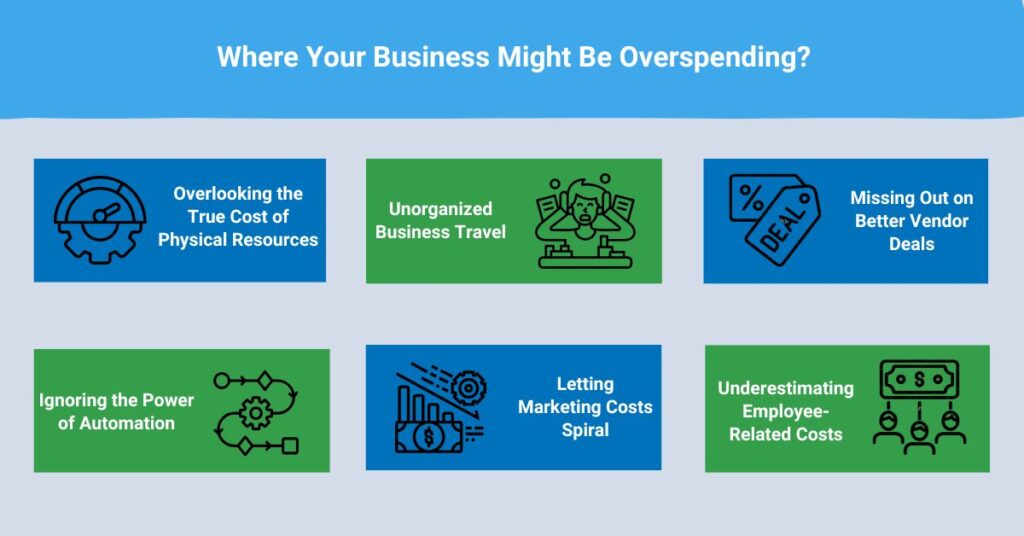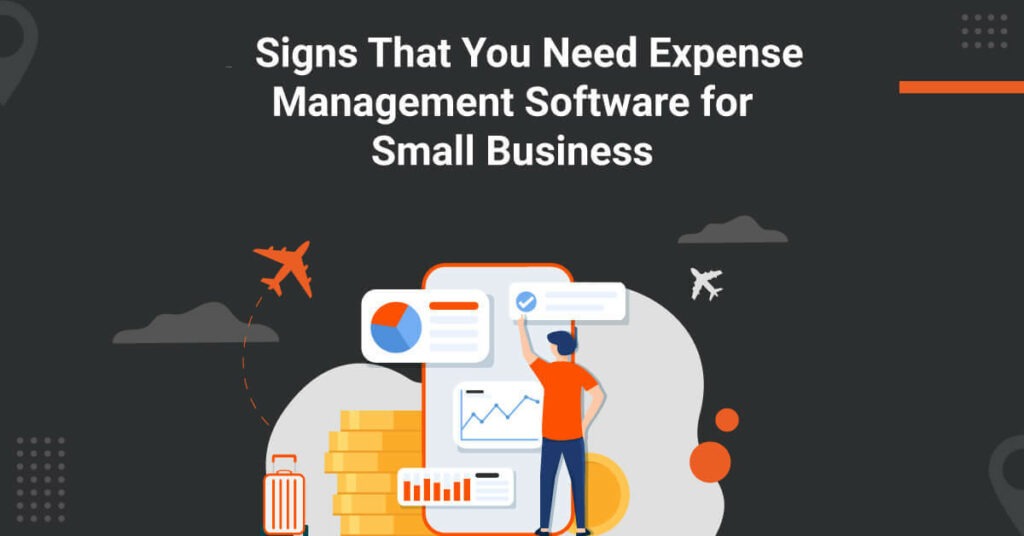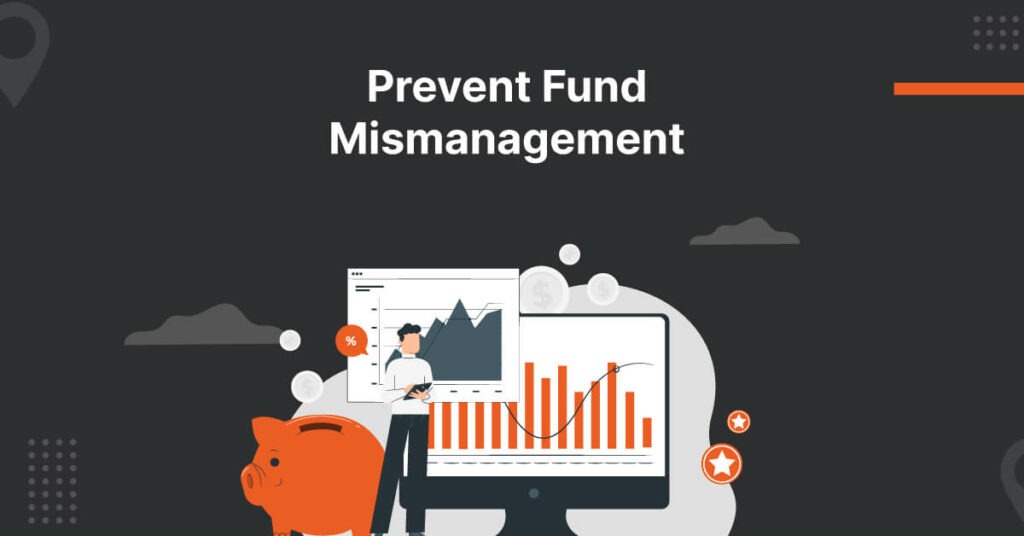
Did you know the average organization wastes an astonishing $18 million annually on unused SaaS licenses alone? That’s just one slice of the overspending pie. Imagine the ripple effects across physical resources, travel, and outdated processes. Are these hidden drains quietly holding your business back?
What if you could redirect those lost dollars toward innovation, team growth, or customer experience? The good news is, you can. By identifying common financial leaks and making smarter decisions, businesses can transform inefficiencies into opportunities for growth.
So, where are you unknowingly overspending in business, and how can you fix it? In this article, we’ll explore six everyday areas where costs tend to spiral and actionable tips to regain control of your budget. Whether it’s managing software subscriptions or negotiating better deals, these insights could save you a small fortune.
Areas Where Businesses Overspend
1. Overlooking the True Cost of Physical Resources
You could be wasting significant money if you’re not closely monitoring your use of physical resources, like office supplies, raw materials, or utilities. For example, unused inventory, excessive energy consumption, or outdated equipment may not seem like major expenses, but over time, they add up and eat into your profits.
Why It Happens:
- Lack of tracking or inventory management
- Reliance on outdated systems or practices
- Over-purchasing supplies to avoid running out
What You Can Do:
- Regular audits should be conducted to understand how resources are being used. Are there items that sit unused or are overstocked?
- Transition to digital processes to reduce dependency on physical resources. For instance, switch to paperless invoicing and online file storage.
Businesses that adopt a resource-conscious approach often reduce overspending in business and improve their environmental footprint.
2. Unorganized Business Travel
Business travel is vital for building relationships, attending key meetings, and expanding your network, but without proper organization, it can quickly spiral into a significant expense. Booking flights at the last minute, choosing premium hotels without research, or needing a clear travel policy can result in inflated costs that could easily be avoided.
Why It Happens:
- Lack of a centralized system for managing travel bookings and expenses
- Employees need to be made aware of travel policies or bypass them
- No pre-negotiated rates with airlines, hotels, or car rental companies
What You Can Do:
- Use travel management software to streamline the booking process, ensure compliance with company policies, and access better deals.
- Set clear travel guidelines, such as encouraging economy flights, setting per diem limits for meals, and prioritizing budget-friendly accommodations.
- Explore alternatives to travel, such as video conferencing, for meetings that don’t require physical presence.
Efficiently managing business travel not only reduces overspending in business but also reduces the environmental impact of frequent flying.
3. Missing Out on Better Vendor Deals
Many businesses must explore better options to settle for the first-priced vendors or service providers offer. This complacency can lead to overspending, primarily if you’ve worked with the same suppliers for years without renegotiating contracts.
Why It Happens:
- Limited time to research alternatives
- Longstanding relationships with current vendors
- Lack of negotiation skills or discomfort with haggling
What You Can Do:
- Review your contracts regularly and compare them against current market rates. Are you paying more for similar services or goods than your competitors?
- Build relationships with multiple suppliers to encourage competitive pricing.
- Don’t hesitate to renegotiate terms like bulk discounts, loyalty rewards, or extended payment periods. Vendors value long-term clients and are often willing to adjust terms to retain your business.
Negotiating better deals with vendors isn’t just about reducing areas where businesses overspend; it’s also an opportunity to improve your supply chain and increase operational efficiency.

4. Ignoring the Power of Automation
Clinging to manual processes may seem harmless, but it can cost you more time, labor, and errors. Whether managing payroll, handling invoices, or tracking inventory, manual tasks are inefficient and can divert your team’s focus from higher-value activities.
Why It Happens:
- Fear of change or initial investment in technology
- Unawareness of automation tools available for specific tasks
- Reluctance to replace traditional processes that feel comfortable
What You Can Do:
- Identify repetitive tasks that consume significant time, such as data entry, scheduling, or customer follow-ups. Automation tools like accounting software, project management platforms, or CRM systems can handle these tasks more efficiently.
- Start small by automating one area of your operations and expand as you see results. For instance, automate payroll first, then move to customer relationship management.
- Train your team to use these tools effectively and ensure they understand how automation supports their work, not replacing it.
The upfront investment in automation often pays for itself by freeing up resources, reducing errors, and overspending in business.
5. Letting Marketing Costs Spiral
Marketing is a critical component of business growth, but it’s easy to overspend when campaigns aren’t well-targeted or results aren’t measured effectively. Investing in high-cost ads, unused tools, or strategies that don’t resonate with your audience can quickly balloon your marketing budget without yielding significant returns.
Why It Happens:
- Lack of a defined strategy or clear goals
- Overreliance on paid advertising without exploring organic channels
- Failure to track the ROI of campaigns
What You Can Do:
- Focus on measurable marketing strategies that align with your target audience, such as email campaigns, content marketing, or social media engagement.
- Review campaign performance metrics regularly to identify what’s working and eliminate what isn’t. If paid ads aren’t converting, shift resources to organic methods.
- Avoid purchasing unnecessary tools or software that duplicate functionality. Opt for platforms that offer multiple features in one package.
A well-planned and measured marketing approach ensures you spend where it counts and achieve the best possible ROI.
6. Underestimating Employee-Related Costs
Employee-related expenses go beyond salaries; they include recruitment, training, benefits, and resources for daily operations. Mismanaging these costs can lead to overspending or losing valuable employees due to dissatisfaction.
Why It Happens:
- High turnover rates lead to frequent recruitment and onboarding costs
- Offering blanket benefits that don’t align with employee needs
- Inefficient allocation of workloads or underutilized talent
What You Can Do:
- Invest in employee retention strategies, such as offering career growth opportunities, flexible working arrangements, and wellness programs. Keeping your current workforce happy is far less costly than recruiting new talent.
- Customize benefits based on employee feedback. For example, if few employees use a gym membership perk, consider reallocating those funds to a more widespread benefit.
- Use workforce management tools to ensure tasks are evenly distributed, and team members are fully utilized. This prevents over-hiring and reduces areas where businesses overspend.
Taking care of your employees while managing costs ensures you build a sustainable and satisfied workforce.
Reduce Overspending in Business with itilite
Unnecessary overspending can drain resources and limit a company’s growth potential. Businesses can regain control over their finances by identifying common waste areas—such as unchecked travel costs.
itilite expense management software makes this process seamless by automating expense tracking, ensuring policy compliance, and offering real-time insights into spending patterns. With itilite, you can eliminate guesswork, reduce errors, and save on expenses—all while empowering your employees to spend smarter.
Ready to turn overspending into optimized savings? Book a free demo today.













